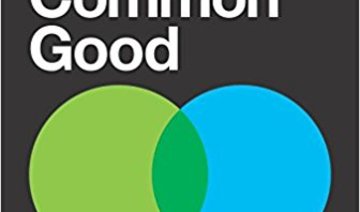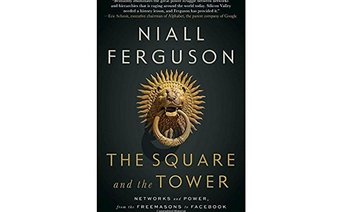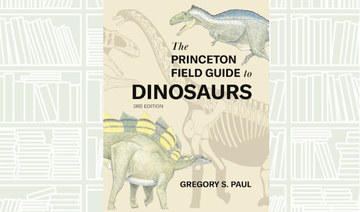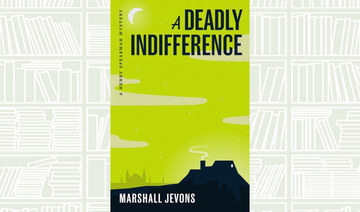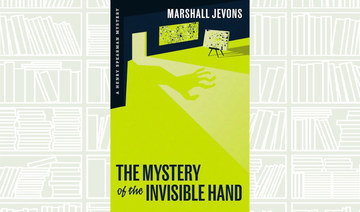“Confessions” by Rabee Jaber tells the harrowing story of a young boy during the Lebanese Civil War, in which he encounters death and destruction as part of daily life. The boy, now a man recalling his earlier years, struggles with his memories and the truth of his past, unable to face some realities and wondering whether or not his life is what he has always thought it to be. Jaber is a celebrated Lebanese author who has written 18 novels. His work is well known throughout the Arab world and he is the editor of Afaaq, a cultural supplement of Al-Hayat newspaper. Originally published in 2008 in Arabic, “Al-I’tirafat” was translated into English by Kareem James Abu-Zeid, an award-winning translator of poetry and fiction.
“My father used to kidnap people and kill them,” is the first line of Jaber’s book. Moving between adulthood and youth, Jaber’s narrator, Maroun, recalls his childhood the best he can, remembering some memories clearly and others vaguely. He is born into the Lebanese Civil War and as turbulent events take hold of the city, they also take hold of his life.
Maroun recalls a childhood with a loving family in a house in Achrafieh with his father, Felix; his mother, Victorine; his sisters, Julia, Mary, Najwa and Liliane; and his big brother, Ilya. He also recalls an enlarged picture of his dead brother that hung on the wall of his house, but he has no memories of his little brother who was also named Maroun.
Mystery immediately engulfs the reader at the beginning of the book, as the narrator tries to recall his past. He repeats memories and statements, excuses himself for not remembering things clearly and asks that the reader be patient with him, admitting that his mistakes are not entirely his fault. “Are you wondering what all this has to do with the story I was telling? I’m trying to make a point about memory. Memories are misleading.”
Maroun’s recollections jump between the 1970s and 1980s, his youth, that has caused him as much joy as it has caused distress in his life. Maroun remembers the constant shelling. He remembers his family crowding into the living room, the room in the middle of the house with windows that were blocked with sandbags, to stay safe. “In that first period of my memories, the world was unclear to me — maybe it wasn’t because of the war, but rather my age, how young I was: I was little, I was often scared.” If the shelling increased, the family would leave the house and go to the underground shelter near the house.
Maroun remembers an East Beirut and a West Beirut divided by a demarcation line. The buildings near the line are bullet-ridden, their windows are shattered and they are covered in black. He remembers that he was often afraid, but also remembers the quiet moments too, the moments when his family would laugh together and eat around the table. He remembers his mother making maamoul cookies and his sisters helping in the kitchen. He remembers the picnics they would take to Mount Lebanon, crossing the Abraham River and visiting the Mar Charbel Monastery. He remembers the ful restaurant where his uncle would give him a bowlful for free and then he remembers hearing someone say that his uncle had been killed in the fighting. He remember his father and brother disappearing from the home and his sister, Najwa, training with the Phalangist fighters. His happy memories and traumatic memories blend into one another.
Jaber does an incredible job of creating an unsettling atmosphere. There is an immediate underlying feeling that something has gone terribly wrong as one reads the book. The narrator clumsily attempts to remember things despite the fact that his memories, dreams and conjured visions overlap and confuse him. He blurs his older brother Ilya’s memories with his own. He cannot remember what he was told and what he has seen. The insecurity and unsureness of the narrator causes the reader to feel unsettled. A narrator is supposed to know the story, but Maroun makes sense of the story along with the reader, even though his insight, the little that he knows, is invaluable to the story.
Jaber takes the reader into a Beirut that has not been witnessed like this before. Stories of the fighting and the 15 years of war create an atmosphere that is almost too palpable. His narrator recalls a playground in school that the children did not play in because it was exposed to sniper fire. Ilya, Maroun’s brother, tells him stories of his father that he does not want to believe. “He was forcing people out of their cars and beating them. He was shooting them and throwing them off the bridge.”
Between the happy family home, the war and the violent life of his father, Maroun is sheltered from the trauma, but not entirely. Throughout the book, Maroun recalls the stares and the confused looks he would encounter. He remembers the awkward questions he would be asked by people and how his sisters and brothers could suddenly turn from being loving to being menacing toward him.
This book is marked by an unsettling narrative, one that is unique in every way. The plot of the story, as well as the writing, is intense. Jaber’s narrative is written in a troubling way, it is choppy and at times disjointed to convey the emotions the narrator feels — confused and disturbed. He often repeats himself to stress the importance of events and as he journeys through Maroun’s life, Jaber takes the reader on a unique ride through Beirut and its neighborhoods, navigating through events of the war, stories of Maroun’s father and Maroun’s own memories.
The trauma of war is one that devastates everyone involved. The atmosphere of loss is almost inexplicable, but Jaber does a fantastic job of inserting his narrative into the heart of the war and Beirut. The observers of war are often lost, but those who are not are there to tell a story.
Book Review: An unsettling look at war in Beirut
Book Review: An unsettling look at war in Beirut

What We Are Reading Today: Heart of Darkness: Unraveling the Mysteries of the Invisible Universe
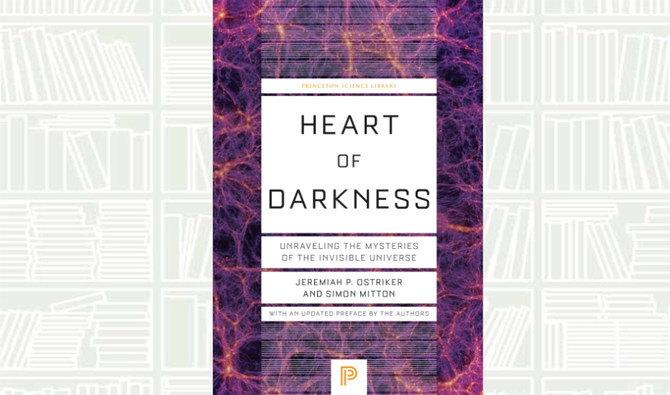
- The story of how evidence for the so-called “Lambda-Cold Dark Matter” model of cosmology has been gathered by generations of scientists throughout the world is told here by one of the pioneers of the field, Jeremiah Ostriker, and his coauthor Simon Mitton
Authors: Jeramiah P. Ostriker and Simmon Mitton
Heart of Darkness describes the incredible saga of humankind’s quest to unravel the deepest secrets of the universe. Over the past 40 years, scientists have learned that two little-understood components—dark matter and dark energy—comprise most of the known cosmos, explain the growth of all cosmic structure, and hold the key to the universe’s fate.
The story of how evidence for the so-called “Lambda-Cold Dark Matter” model of cosmology has been gathered by generations of scientists throughout the world is told here by one of the pioneers of the field, Jeremiah Ostriker, and his coauthor Simon Mitton.
From humankind’s early attempts to comprehend Earth’s place in the solar system, to astronomers’ exploration of the Milky Way galaxy and the realm of the nebulae beyond, to the detection of the primordial fluctuations of energy from which all subsequent structure developed, this book explains the physics and the history of how the current model of our universe arose and has passed every test hurled at it by the skeptics.
This monumental puzzle is far from complete, however, as scientists confront the mysteries of the ultimate causes of cosmic structure formation and the real nature and origin of dark matter and dark energy.
What We Are Reading Today: ‘A Natural History of Shells’ by Geerat Vermeij

Geerat Vermeij wrote this “celebration of shells” to share his enthusiasm for these supremely elegant creations and what they can teach us about nature.
Most popular books on shells emphasize the identification of species, but Vermeij uses shells as a way to explore major ideas in biology.
How are shells built? How do they work? And how did they evolve?
With lucidity and charm, the MacArthur-winning evolutionary biologist reveals how shells give us insights into the lives of animals today and in the distant geological past.
What We Are Reading Today: The Princeton Field Guide to Dinosaurs

Author: Gregory S. Paul
The bestselling “Princeton Field Guide to Dinosaurs” remains the must-have book for anyone who loves dinosaurs, from amateur enthusiasts to professional paleontologists. Now extensively revised and expanded, this dazzlingly illustrated large-format edition features nearly 100 new dinosaur species and hundreds of new and updated illustrations, bringing readers up to the minute on the latest discoveries and research that are radically transforming what we know about dinosaurs and their world.
What We Are Reading Today: The Virtue Proposition by Sig Berg
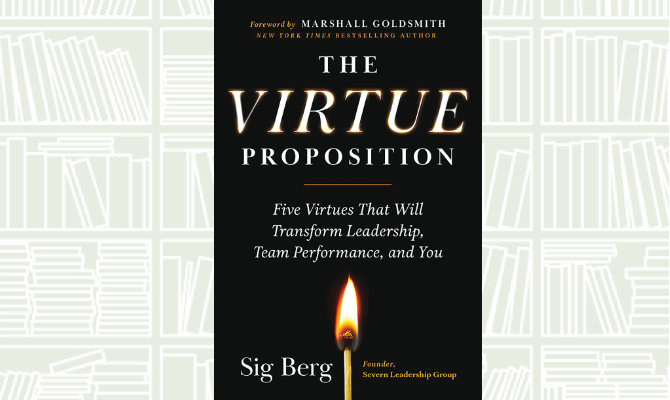
Sig Berg, founder of the Severn Leadership Group, explains what’s missing from traditional leadership, with its emphasis on the rules and rituals of boardrooms and C-suites, and from iconoclastic leadership, which urges you to move fast and break things.
Neither of these embrace virtues, and neither has, nor ever will, deliver consistent superior results.
There is a courageous third way: virtuous leadership.
This book speaks to men and women who witness the absence of virtues and know they can do better, says a review published on goodreads.com.
What We Are Reading Today: ‘Stellar English’

Author: FRANK L. CIOFFI
“Stellar English” lays out the fundamentals of effective writing, from word choice and punctuation to parts of speech and common errors.
Frank Cioffi emphasizes how formal written English—though only a sub-dialect of the language—enables writers to reach a wide and heterogenous audience.
Cioffi’s many example sentences illustrating grammatical principles tilt in an otherworldly direction, making up a science fiction story involving alien invasion.


